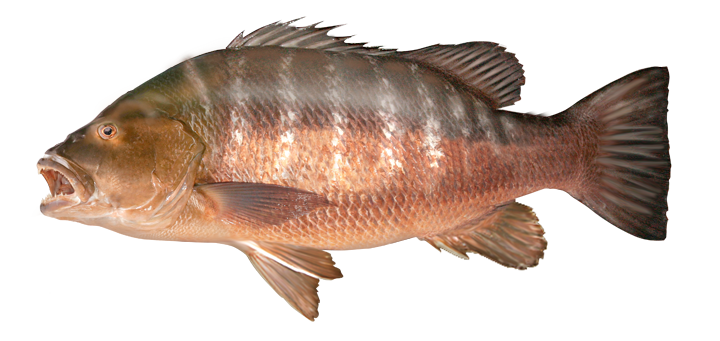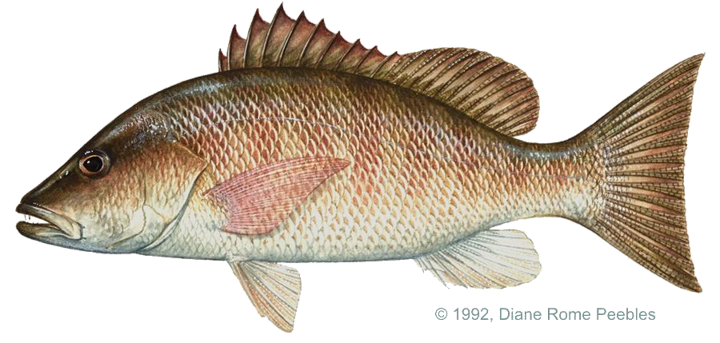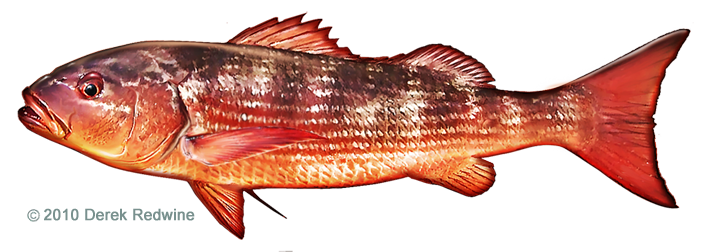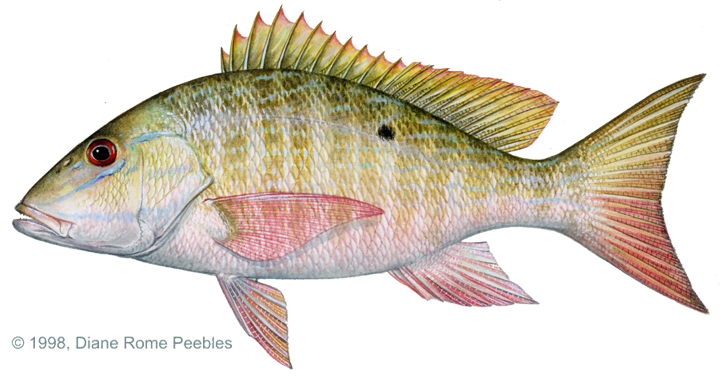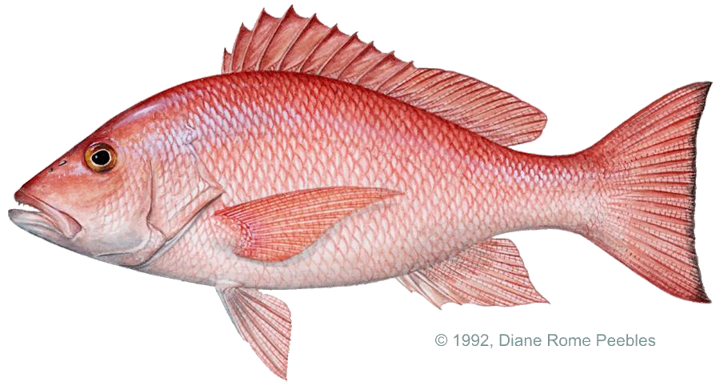Game Fish Identification Reference Guides
Snapper, Papuan black
(Lutjanus goldiei)
(Lutjanus goldiei)
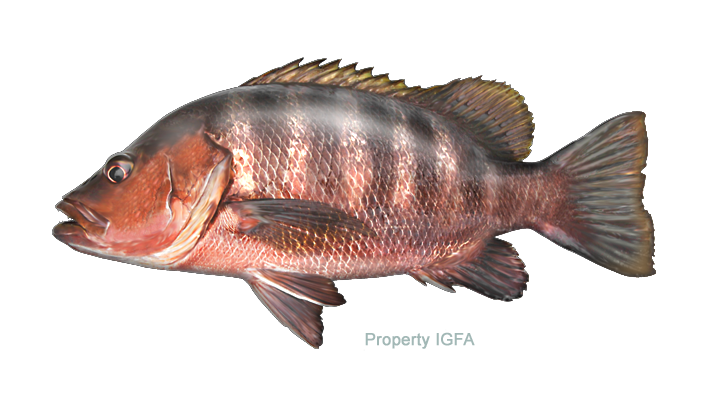
(Macleay, 1882); LUTJANIDAE FAMILY; also called Niugini bass, Papuan black bass, pargo de Papua, vivaneau de Papua, ikan merah
The Papuan black snapper is known only from southern Papua New Guinea from the Port Moresby district to the Fly River. Popularly know as Niugini bass and Papuan black bass, this species is actually a member of the snapper family. It is rated as one of the worlds toughest yet least-known freshwater fishes. The fish inhabits large, snag infested jungle streams and tributaries and may occur in estuaries.
The stocky Papuan black snapper resembles a cross between a mangrove (gray) snapper and a largemouth bass. The large scaled body is silvery to steely gray or black. There are two distinct color phases with the entire body blackish or with a series of 6 or 7 broad grayish bars on the sides. It has two large canine teeth in the upper jaw and smaller teeth on the lower jaw.
Casting with saltwater-quality surface plugs or shallow and medium running plugs is the most common method of fishing for this species. Papuan black bass are also caught trolling and a few have discovered that fly-fishing is possible. The major challenge is stopping an individual before it dives for cover. Locals use short, powerful rods, reels with top-quality drags and heavy leaders to cope with logs, rocks and other obstructions encountered in bass habitat.
This jungle brawler is a popular sport fish, forming the basis of a safari-angling industry
The Papuan black snapper is known only from southern Papua New Guinea from the Port Moresby district to the Fly River. Popularly know as Niugini bass and Papuan black bass, this species is actually a member of the snapper family. It is rated as one of the worlds toughest yet least-known freshwater fishes. The fish inhabits large, snag infested jungle streams and tributaries and may occur in estuaries.
The stocky Papuan black snapper resembles a cross between a mangrove (gray) snapper and a largemouth bass. The large scaled body is silvery to steely gray or black. There are two distinct color phases with the entire body blackish or with a series of 6 or 7 broad grayish bars on the sides. It has two large canine teeth in the upper jaw and smaller teeth on the lower jaw.
Casting with saltwater-quality surface plugs or shallow and medium running plugs is the most common method of fishing for this species. Papuan black bass are also caught trolling and a few have discovered that fly-fishing is possible. The major challenge is stopping an individual before it dives for cover. Locals use short, powerful rods, reels with top-quality drags and heavy leaders to cope with logs, rocks and other obstructions encountered in bass habitat.
This jungle brawler is a popular sport fish, forming the basis of a safari-angling industry













